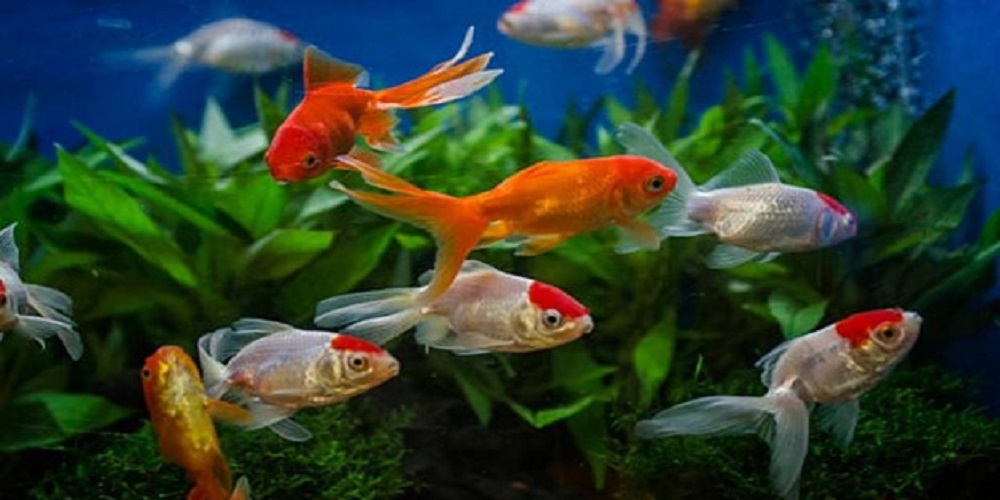How Do Fish Lay Eggs?

When it comes to reproduction and mating, fish get counted among the weirder types of aquatic animals out there. This distinction doesn’t end with its classification in sets like livebearers vs egg layers, as each set has different types. There is internal fertilization, external fertilization and a question of where will be left to develop.
In some cases, the fish in consideration can be hermaphroditic, which means that it lends more variety to the act of reproduction.
How Many Types of Eggs Do Fish Lay?
Oviparity is the most common method of reproduction among fish. Oviparous eggs lay unfertilized eggs in the water. First, the female fish lays eggs in a cloud of sperm released by the male fish. After the eggs get laid and covered with the cloud of sperms, they either float or sink before hatching. Floating or sinking creates the difference between being either demersal or pelagic.
1. Pelagic Eggs
This type of egg is lighter than water. They float, often near the surface. Most of the marine fish out there spawn pelagic eggs.
2. Demersal Eggs
On the other hand, there are demersal eggs heavier than water. They often have adhesive properties which let them sink and stick onto certain structures. They get developed in these locations. Greenlings, herring and smelt produce the demersal type of eggs.
How Do Fish Lay Eggs?
Female fish are usually visible wider than Male fish when they get ready to release eggs. Depending upon the species, female fish releases hundreds or thousands of eggs. Eggs either land in clusters or fall to the bottom of the tank; it depends upon the type of egg. Male fish swim over the laid eggs and release sperms to fertilize them.
What do The Types of Fish depend upon Laid Eggs?
Fish classifies into three types depending on the nature of the eggs and what happens to them right after they are laid.
1. Egg Scatterers
Egg scattering species, for example, Danios, release non-sticky eggs. These eggs either float or randomly fall somewhere on the bottom of the tank.
2. Egg Depositors
Egg-depositor fish lay larger eggs and stick to rocks, substrate, wood or the tank base.
3. Egg Buriers
The third type is egg buriers. This means female fish will bury their eggs in the substrate on the bottom of the tank. The male fish must dive deep into the substrate level to fertilize the eggs.
Do All the Fish Lay Eggs?
No, all types of fish do not produce eggs. There are a few species that do not lay eggs. Instead, they produce live babies, which are called ‘fry’. Some livebearers species include Endlers fish, platies, swordtail, mollies and guppies. In these types of fish, internal fertilization of the egg occurs through mating via a modified anal fin called a gonopodium. Gestation periods last somewhere between two and four weeks. The internally fertilized eggs mature and hatch inside the female body, giving birth to the live babies.
Depending upon the species and number of fry births, the birthing process can take between six and twelve hours. Many types of fish, including guppies, eat their young ones. Therefore, it is always a good idea to separate a fry immediately from the adult fish until they are grown enough to protect themselves from aggressors’ attacks.
How To Protect Eggs and Fry?
After an egg is laid or fry is born, it is really important to protect it until it reaches the age of maturity, where it can easily defend itself from the predator’s attack. There are a few species of fish capable of guarding both eggs and younger ones before and after the hatching phase. For example, males of Sucker mouth Catfish species can protect the eggs laid by their partners until they get hatched, and cichlids warn fry of danger.
Cichlids are also mouthbrooders. This means they carry their eggs protectively in their mouth unless they hatch. Cichlids do not eat anything during this time which usually lasts between 21 and 36 days. This is their own unique way of protecting the eggs laid by their partners. There are times when they even allow newly born fry to hide inside their mouth to prevent attacks of predator fish.
Many species, including beta fish, are known for creating protective bubble nests around their unhatched eggs which protects them until they get hatched.
What Time of A Year Do Fish Lay Eggs?
The reproducing season depends pretty much on the species to which a fish belongs from. Some species of fish are capable of breeding throughout the year. Examples of such fish are swordtail, guppies and Mollies. Other species depend upon a particular season to breed by either laying eggs or giving birth to their young ones. These species wait for a season when optimal water temperature and the food source are sufficient.
Can We Produce Ideal Breeding Conditions in Our Aquarium?
Of course, you can produce ideal conditions in your home aquarium if you want your pet fish to breed. They can set these appropriate conditions by gradually raising the water temperature and extending the time length when lights are kept on. Adding food options rich in proteins is also a good idea that can considerably contribute to attaining the desired breeding conditions in your aquarium.
This means that we can easily breed different fish species in our aquarium, but for this purpose, we first have to set some conditions which are considered ideal for reproduction.
Why Do Fish Lay Thousands of Eggs?
This is one of the most frequently asked questions when only one egg can also get fertilized by a cloud of sperms, why do fish lay thousands of eggs? Well, this is an interesting question to ponder upon. If you are also looking to answer this question, we have got you covered.
A fish lays thousands of eggs because the chances of one egg getting fertilized, becoming a baby and surviving until childhood are extremely low. When hundreds and thousands of eggs are laid, there are extremely high chances of some of them getting fertilized and developed in a baby. This is true for not only fish but many other mammals too.
Body Structures And Their Functions
Suppose we closely observe the anatomy and behaviour of the egg-laying fish. In that case, we notice differently creative parts, such as they possess wide fins and often, an attentive parent surrounding the laid eggs. What are the functions of these anatomical structures, and why do Male fish show such behaviour? The following table answers this question by shedding light on different specialized body structures and the functions which they are designed for.
| Structure or Member | Function |
| Wide Fin | The head of fish possesses wide pectoral fins designed to fan freshwater on the laid eggs. |
| Rocky Nest | There exist numerous shallow holes in underwater rocks. They are well hidden from aggressors and predator fish. Bullhead fish usually lay their eggs here to prevent them from being attacked. |
| Blunt Head | Some fish have a blunt, flat head which gives them the name bullhead. This head possesses important organs like pectoral fins. |
| Clusters of eggs | These are the clumps of yellowish, round-shaped eggs getting stuck to the hollows in underwater rocks near the bottom of the ocean. |
| Attentive Parent | Most of the time, male fish proves to be an attentive parent. It stays near its eggs and protects them from attackers. |
| Male Bullhead | The bullhead is native to European countries. During the springtime, the female fish lays around 250 eggs near the bottoms of lakes and rivers. The Male not only guards them but also fans freshwater on eggs with the help of its pectoral fins.
After almost one month, the eggs get fully developed, hatched and finally, the young one begins to swim. Breeding in captive fish. The first thing you need to make sure of is that you have healthy female and male fish of the same species in your aquarium. Then, you need to create the right setting for them. If fish are comfortable in the environment, they live in, and they are more likely to spawn. |
Fortunately, schooling fish are more likely to spawn in captivity. Examples of these fish are tetras, danios, cichlids and barbs.
Conclusion
Fish are a unique creation of nature, and so is their reproduction method. They have versatility in the ways by which they lay eggs. Fish which reproduce by laying eggs are called Oviparous fish. In this type of reproduction, female fish lays eggs that get fertilized by a cloud of sperms. These eggs are either pelagic or demersal. If the laid eggs start floating in the water, they belong to the pelagic category. On the other hand, if laid eggs get sunk somewhere in the bottom of a river, ocean or pond, this is a sign that they belong to the demersal category. Egg-laying fish are further sub-classified into egg Scatterers, egg Buriers and egg Depositors.
All fish do not lay eggs as some keep their fertilized eggs inside their body where the gestation period gets completed, and they give birth to their young ones called ‘fry’. It is important to separate these newborn baby fish from adult fish to prevent them from being attacked by predators.



